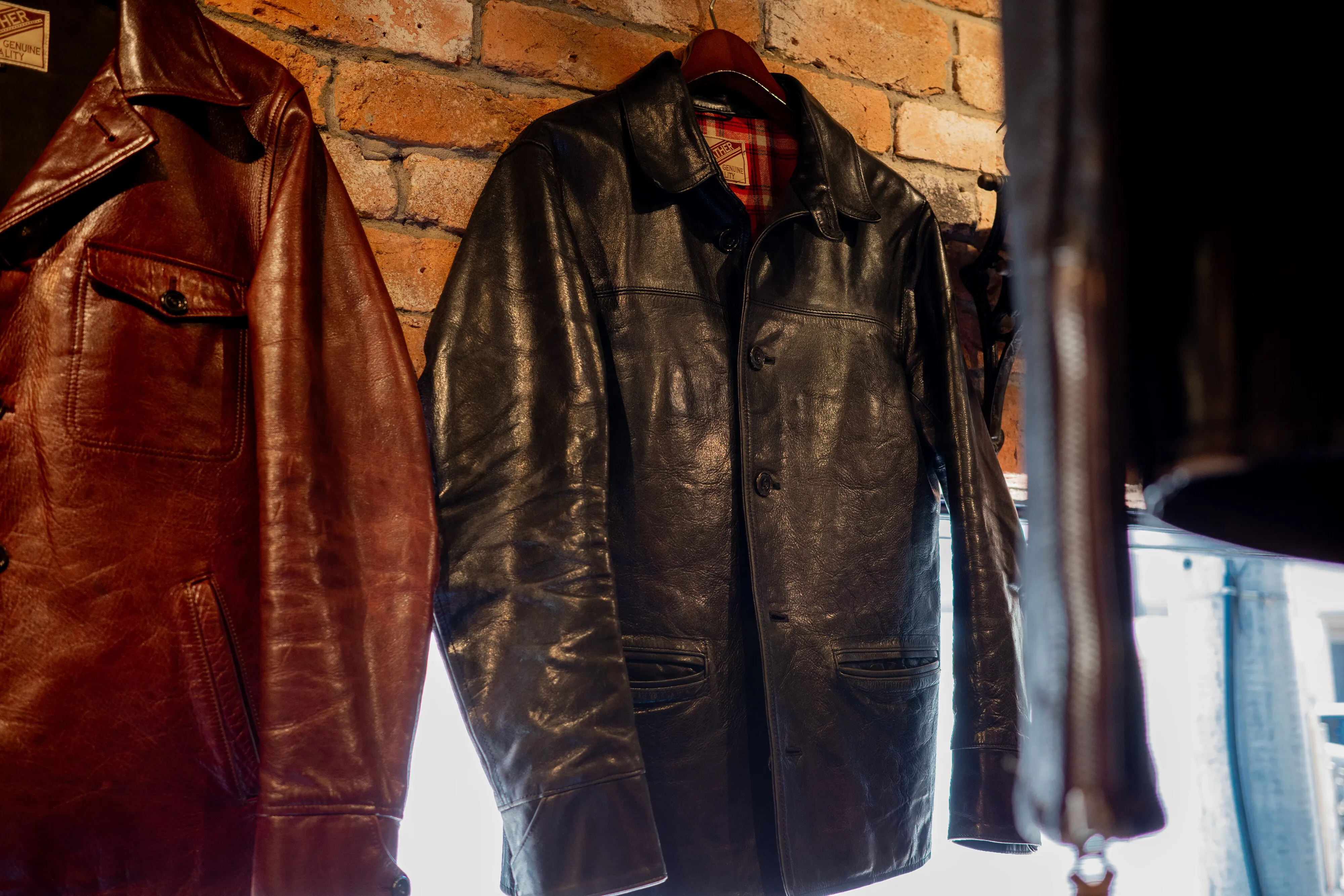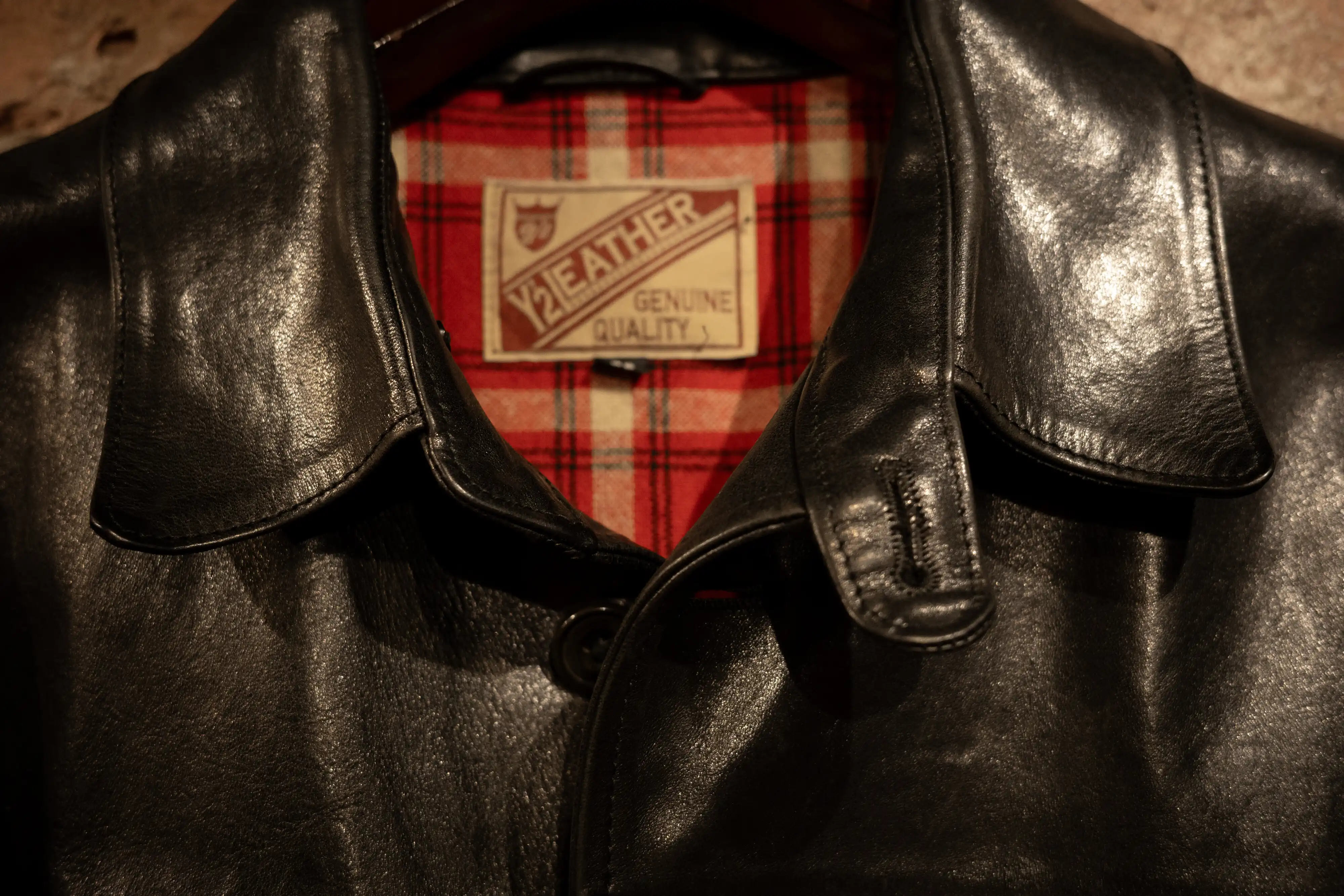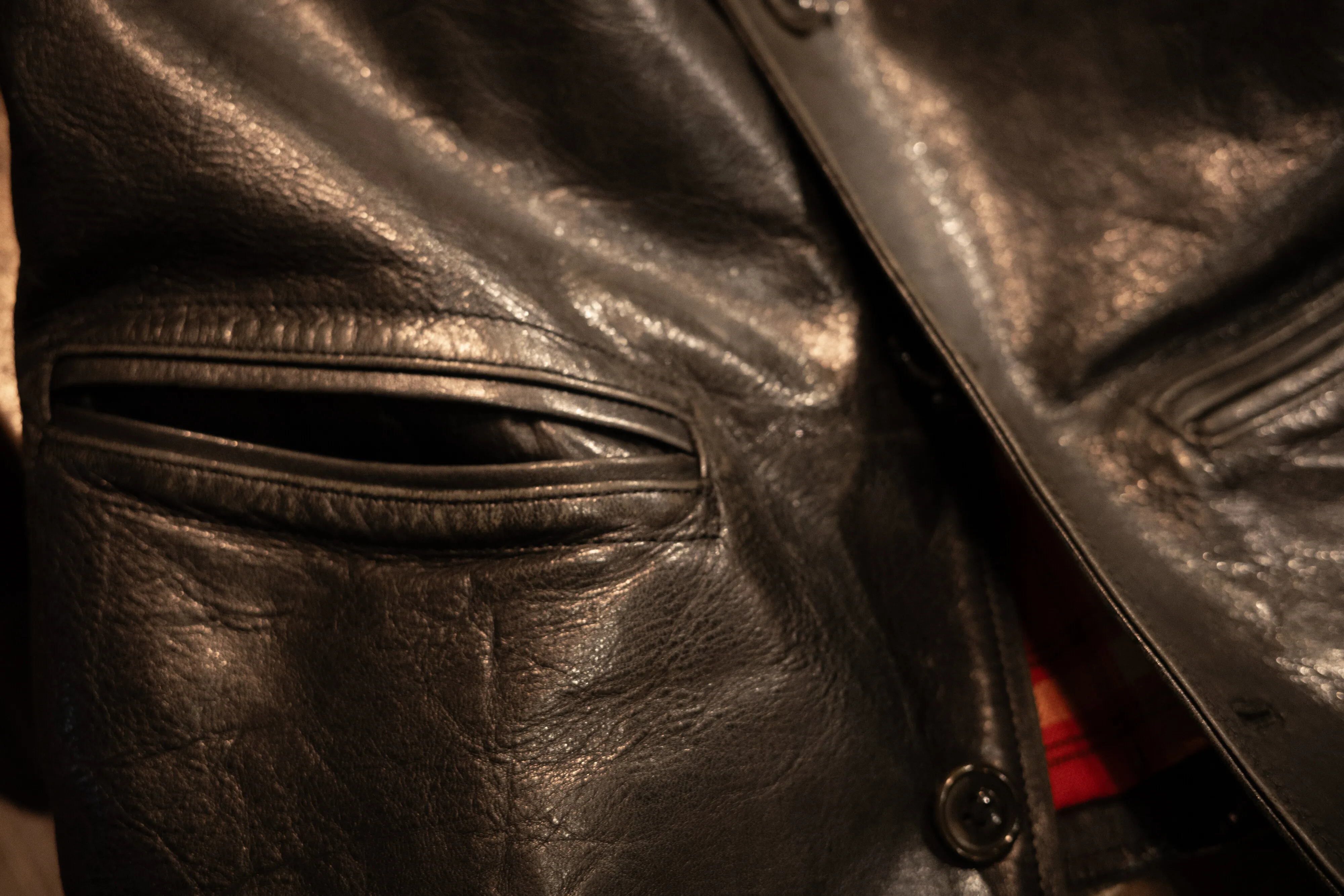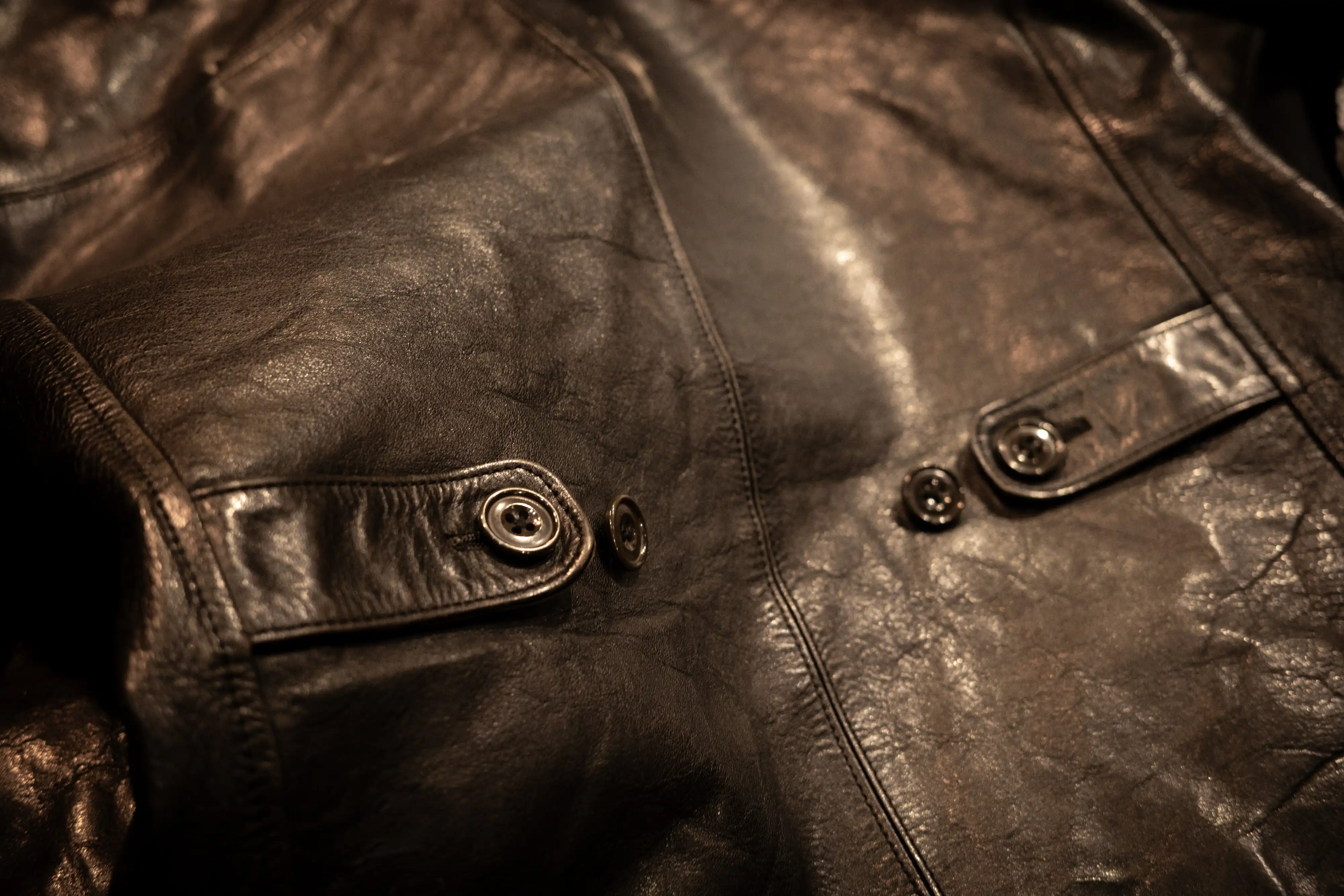2025.08.09
A Love Letter to Leather Jackets, by Yours Truly: Takao Yanamoto
In interviews, I'm often asked about my favorite type of leather jacket. Well, it is none other than the car coat. To explain what makes them so great, I'll share my journey with leather jackets, as this is a very personal topic for me.

Amekaji, my gateway into the world of leather jackets.
I am the second president or Y'2 Leather, succeeding my father who founded the company. I wish I could say he trained in the ways of leather-making to prepare for my role, but that was not the case. My father worked from dawn to dusk and only had Sundays off. He never brought work home, so I have no memories of him teaching me about leather jackets.
American heritage style fashion, or “Amekaji,” was hugely popular in Japan at the time, and like any other teenager interested in fashion, I would wander around the southside of Osaka City, mainly Namba and Shinsaibashi areas, frequenting shops like NYLON and Shokido. I naturally developed a taste for jeans, workwear and military apparel. Then one day, my father gave me my first leather jacket, a G-1. I was still just a third-year junior high student, and didn't start wearing it until high school.
It was very stiff at first, then gradually softened as I wore it, only to stiffen again when wet in the rain. It was so cool to watch it evolve into a jacket that was truly mine. By the time I was in college, my passion had grown to the point where I told my father, “I want work in the leather industry!” But he held very high standards in his work, and before agreeing to hire me, he instructed me to go into apprenticeship at a certain brand in Tokyo, where I began my training.
My search for the captivating aura of a vintage car coat

My fervor for Amekaji only heated up after I started living in Tokyo. I worked at a vintage-specialized brand located in Harajuku, a haven for vintage clothing shops I explored in my free time. Getting to see and touch all sorts of vintage leather jackets for myself really sharpened my eye for quality. I often daydreamed how cool it’d be to craft something like that at Y'2. Since I rode a motorcycle at the time, I had been thinking that an N-1 Deck Jacket, with its excellent cold protection, would be a surefire hit. And it is the N-1 which we made soon after I returned to Osaka, still a long-running bestseller today.
One day, while living in Tokyo and hopping between vintage shops as usual,, I had a chance encounter with a horsehide car coat from the 1930s at a shop in Shimokitazawa. At the time, my interest in leather jackets was especially focused on the 1930s-40s, when horsehide really started to come to the forefront. Until then, cold-weather gear was mainly sheepskin or fur. This jacket had no zippers or other embellishment, and its long silhouette showcased the pure, raw beauty of horsehide. It represented the unblemished essence of horsehide, softened and worn-in over time. Its aged patina, free of chrome or pigment, perfectly matched the coat’s design, capturing the unique texture of horsehide when it was still a new choice.
I wanted it so bad I could taste it, but as fate would have it, I’d just blown a fortune on a pair White’s boots, and with a heavy heart I let that car coat go. Believe it or not, I happened upon another car coat from the 30’s as well, but–wouldn’t you know it?-- I’d just bought another pair of White’s boots and had to give up on that one as well. I took that as a sign: to get back to Osaka and make one myself. The texture of those two car coats have stayed with me since then, and my desire to make such a jacket would eventually give birth to–yes– the launch of Eco Horse.
The appeal of a car coat, as explained by its passionate craftsman
One of my favorite points, and I’m kind of a geek about this, is the way the front pockets evolve over time. The piping, starting out quite crisp and neat, gradually softens and droops, hanging half-open. A natural sheen develops around there, and the wear patterns reveal the quirks of your dominant hand. I also love how the stiff collar softens and curls back into a clean, elegant shape.

Once you’ve broken it in this far, it can be coordinated almost any way you want. In the spring, pair it casually with a T-shirt and jeans. In the winter, the go-to look is over an untucked flannel shirt, and it matches perfectly with any pants. For those who travel by train or car, just wrap a scarf around your neck, and you’ll make it no problem through the middle of winter. Since it is a coat, you can use it to dress fairly nicely, but also use it as rugged workwear as it was in days past.

At our company store, we display the original Eco Horse car coat that we made 16 years ago and that I have worn in since then. This jacket marks the start of my leather career. I passionately crafted it with all the bells and whistles to match my vintage inspiration, like a chin strap, hidden ribs and back tabs, but removed all of those to arrive at the current, simpler, to maximize the allure of horsehide leather. Indeed, the prominence of car coats in Y’2 Leather’s lineup is no coincidence, and not because we thought they would be big sellers. It’s simply because, ever since I encountered that car coat at that vintage shop, I knew I would want to wear it for a long time.
